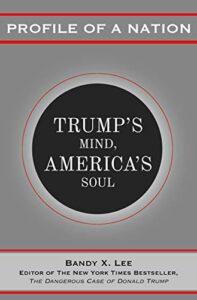Glenn Greenwald has an interesting take on what is happening with mainstream media lately.
In the 1950s and 60s we had
— just as they did in the Cold War with domestic Communism
— and after the Oklahoma City bombing when the Clinton Administration demanded backdoor internet access in the name of stopping right-wing militias
— and again after 9/11 when people like Newt Gingrich wanted to curb free speech in the name of stopping the threat of Islamic radicalism inside the U.S.
Continuing the above pattern, Greenwald fears,
Even with Trump gone, [corporate media in league with national security state and the neocon-backed and corporate-funded Democratic Party] are going to use every FBI tactic to exaggerate the threat of these domestic movements [e.g. QAnon, Proud Boys and the Boogaloo Bois, “Trump supporters” and Russian social media plants] to keep you in such a state of fear that you acquiesce to whatever powers they claim they need to defeat these forces of domestic right-wing darkness.
This playbook is as old and obvious as it is pernicious.
An excerpt from the article that shows the coalition of media, corporate and political interests working to maintain America’s military presence in Afghanistan:
This is not the first time the Trump administration has been condemned after unveiling its plans to withdraw troops from Afghanistan. In July, pro-war Democrats on the House Armed Services Committee, led by their Lockheed-and-Raytheon-funded Chairman Adam Smith, partnered with Congresswoman Liz Cheney and her pro-war GOP allies to block the use of funds for removing troops (not only from Afghanistan but also Germany), as part of a massive increase in military spending. The oppositional left-right coalition of anti-war Democrats such as Ro Khanna and Tulsi Gabbard and America-First Trump supporters such as Matt Gaetz were no match for the bipartisan pro-war coalition which attempted to block any end to the war.
A crucial weapon which Smith, Cheney and the other anti-withdrawal Committee members wielded was a widely-hyped New York Times scoop published days before the Committee vote, which — in its first paragraph — announced:
American intelligence officials have concluded that a Russian military intelligence unit secretly offered bounties to Taliban-linked militants for killing coalition forces in Afghanistan — including targeting American troops — amid the peace talks to end the long-running war there, according to officials briefed on the matter.
Repeatedly citing this New York Times story, based on the claims of anonymous “intelligence officials,” the bipartisan pro-war wing of the Committee insisted that to leave Afghanistan now would be particularly inappropriate and dangerous in light of this dastardly Russian interference. (Top military officials and the commander in Afghanistan later admitted the bounty program “had not been corroborated by intelligence agencies and that they do not believe any attacks in Afghanistan that resulted in American casualties can be directly tied to it,” but by then, the job was done).
And thus did this union of pro-war Democrats, Cheney-led neocons, the intelligence community and their chosen mainstream media outlets succeed in providing the perfectly crafted tool at the most opportune moment to justify blocking an end to America’s longest war. That is precisely the same coalition that drowned U.S. politics for more than three years in the sustained, monomaniacal disinformation campaign about Putin’s takeover of the U.S.
Much of the rest of the article is about the power mainstream media and Silicon Valley interests have exerted in censoring social media. Meanwhile, the corporate media giants that were identified as the main propaganda agents in Edward Herman and Noam Chomsky’s Manufacturing Consent are now increasingly seen as bulwarks of “objective news reporting” and guardians of truth against
fringe groups of fat middle-aged guys in the deindustrialized, decimated, deprived interior of the country cosplaying as militiamen, or random, anonymous MAGA and QAnon trolls.
Perspective. I am not sure I have it right, yet. I thought the far right and their alternative reality campaigns are a lot more of a serious threat than Greenwald seems to allow. But at the same time, I cannot deny the ease with which the mainstream media appear to be getting a free pass to spread the propaganda interests a “new coalition of power”:
Here we see the new coalition of power that has formed during the Trump era: hawkish and corporatist Democrats, united when necessary with pro-war/neocon Republicans, Bush/Cheney operatives, the national security state and large corporate media outlets outside of Fox News.
The article is The New Ruling Coalition: Opposition to Afghanistan Withdrawal Shows Its Key Factions

















